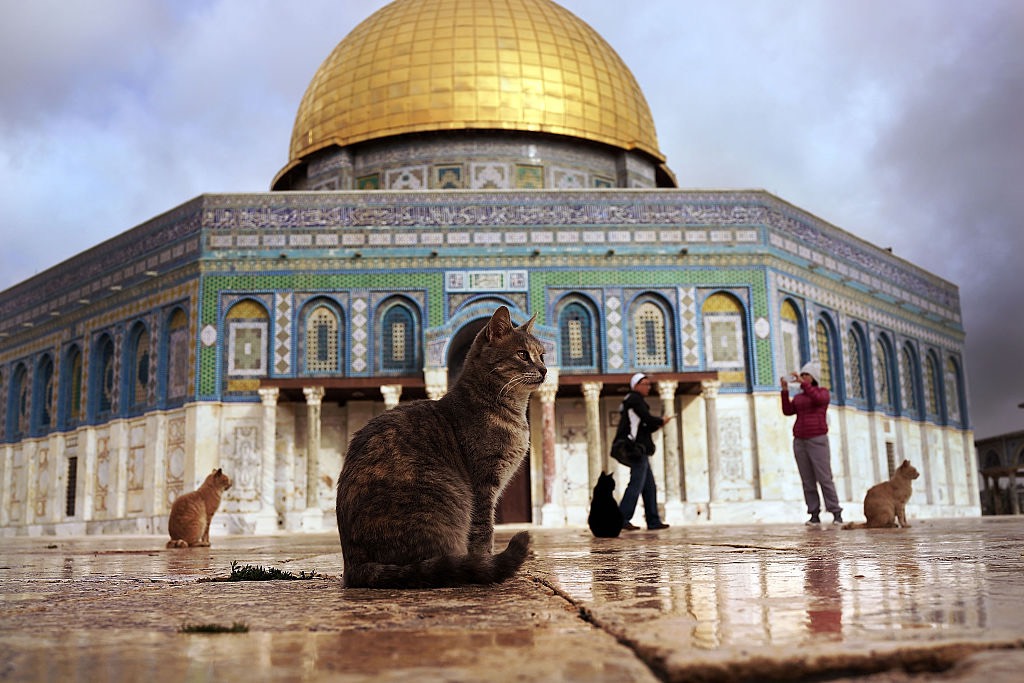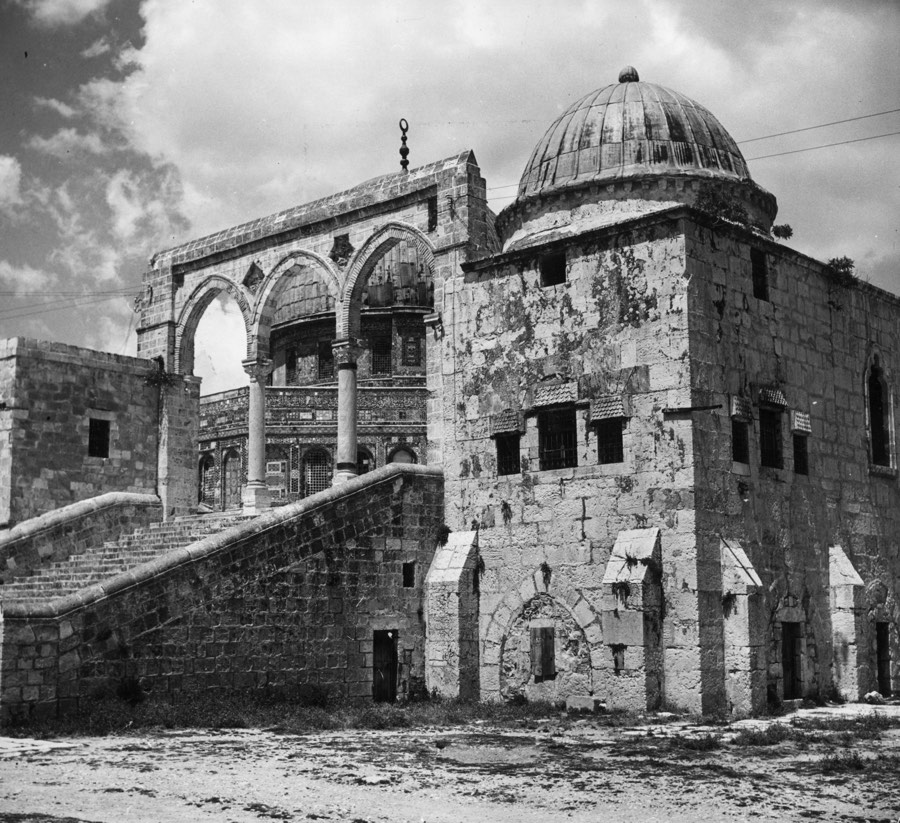Did UNESCO Deny That the Temple Mount Had Jewish Temples?

If you believe what has been touted by several news outlets over the past week, UNESCO seems to have given short shrift to the Temple Mount, the most holy site in Jerusalem.
During that time, media outlets all over the world have published stories saying that UNESCO (U.N. Educational, Scientific and Cultural Organization), an agency of the UN that deals with cultural heritage issues, has denied that the Temple Mount was ever the home of Jewish temples.
But that is not exactly the case, though sometimes perception is everything.
The situation stems from an Oct. 12 resolution that was passed by UNESCO's executive board, comprising representatives from 58 states. During the meeting in Paris, this board reviewed reports and proposed and voted on a wide range of resolutions that dealt with cultural heritage, violent extremism and climate change among other issues. [The Holy Land: 7 Amazing Archaeological Finds]
Temple Mount and Al-Haram al-Sharif
Undeniably, two temples — the most sacred sites for the Jewish people in both ancient times and today — once resided at the Temple Mount. The first temple, which housed the Ark of the Covenant, was destroyed by the Babylonians in 587 B.C., while the second temple, built by King Herod (who reigned around 39 B.C to 1 B.C.), was destroyed by the Romans in A.D. 70 during a Jewish revolt against the Roman Empire. Though surviving archaeological remains of the temples are sparse (in part, because it is difficult to carry out excavations there due to ongoing conflicts), professional historians and archaeologists do not question the past existence of the two Jewish temples.

The site is also important to Christians. The Mount of Olives, where Jesus ascended to heaven, is located just to the east and the fourth century Church of the Holy Sepulchre is also located near the Temple Mount. [Proof of Jesus Christ? 6 Pieces of Evidence Debated]
What happened?
The resolution, which contains 41 sections, does not deny the existence of Jewish temples on the Temple Mount; in fact, it affirmed "the importance of the Old City of Jerusalem and its Walls for the three monotheistic religions."
Sign up for the Live Science daily newsletter now
Get the world’s most fascinating discoveries delivered straight to your inbox.
However, when writing the resolution, the board referred to the mount only by its Islamic name, "Al-Haram al-Sharif," and never used the words "Temple Mount." It was also highly critical of Israel, addressing Palestinian grievances about the site while largely ignoring Israeli concerns.
Irina Bokova, the director-general of UNESCO, who was not part of the board, was not happy with the resolution's wording and the perception that Jewish ties to the site were being denied or downplayed. "The heritage of Jerusalem is indivisible, and each of its communities has a right to the explicit recognition of their history and relationship with the city. To deny, conceal or erase any of the Jewish, Christian or Muslim traditions undermines the integrity of the site, and runs counter to the reasons that justified its inscription on the UNESCO World Heritage list," she said in a statement.
Long-standing conflict
The Temple Mount/Al-Haram al-Sharif has long been a flashpoint in the conflict between the Israelis and Palestinians. Both Muslims and Jews wish to worship at the site, and the resulting conflicts have led to the deaths of many people over the past century.
Israel gained full control over the Temple Mount after the 1967 war with Jordan, when it gained Jerusalem and the West Bank. Since that time, Israeli settlements have sprung up in the West Bank, and Jewish neighborhoods have appeared in East Jerusalem (an area that used to have mostly Muslim inhabitants).
Israel and the Palestinians have a long list of grievances against one another. For instance, the Palestinians have accused the Israelis of destroying their history at the site, the UNESCO resolution claiming that Israel "demolished" and removed Islamic-period remains. The resolution also contains a long list of alleged actions by the Israelis, which the authors say are harming Muslim worshippers.
Meanwhile, many Israelis accuse the Waqf (also spelled Awqaf), a trust that administers the Dome of the Rock and Al-Aqsa Mosque, of engaging in illegal renovation and excavation work that is destroying the remains of Jewish buildings and artifacts. As part of the "Temple Mount Sifting Project," archaeologists have been going through the debris dug up by the Waqf and have found numerous archaeological remains, including decorated stone tiles that they say are from the Second Temple.
Both sides have accused the other of preventing their people from praying at the Temple site, along with facilitating and encouraging violent attacks that have resulted in the deaths of people on both sides.
Please get along
In her statement, Bokova urged Jews, Muslims and Christians to respect each other's heritage, to use the site peacefully and to coexist in Jerusalem peacefully.
"In this microcosm of humanity's spiritual diversity, different peoples worship the same places, sometimes under different names. The recognition, use of and respect for these names is paramount. The Al Aqsa Mosque / Al-Haram al-Sharif, the sacred shrine of Muslims, is also the Har HaBayit — or Temple Mount — whose Western Wall is the holiest place in Judaism, a few steps away from the Saint Sepulchre and the Mount of Olives revered by Christians," Bokova said.
"We have a collective responsibility to strengthen this cultural and religious coexistence, by the power of acts and also by the power of words. This requirement is stronger than ever, to bridge the divisions that harm the multi-faith character of the Old City," she said.
The resolution, which was proposed by Algeria, Egypt, Lebanon, Morocco, Oman, Qatar and Sudan, ultimately passed. Media reports indicate that it passed with 24 "yes" votes, six "no" votes and 26 abstentions.
Original article on Live Science.

Owen Jarus is a regular contributor to Live Science who writes about archaeology and humans' past. He has also written for The Independent (UK), The Canadian Press (CP) and The Associated Press (AP), among others. Owen has a bachelor of arts degree from the University of Toronto and a journalism degree from Ryerson University.









